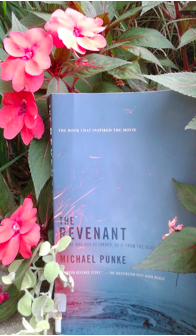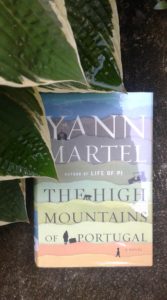 Michael Punke found enough good ideas in the journals about Hugh Glass to write a novel. At the end of the book, the author acknowledged his historical uncertainties. Alejandro G. Inarritu also found good ideas in The Revenant about the life of Hugh Glass. Inarritu strayed far enough from the Punke story to barely (or shall I say bear-ly) resemble the novel. For weeks, I wondered why Inarritu changed the story. Why mess with a good thing?
Michael Punke found enough good ideas in the journals about Hugh Glass to write a novel. At the end of the book, the author acknowledged his historical uncertainties. Alejandro G. Inarritu also found good ideas in The Revenant about the life of Hugh Glass. Inarritu strayed far enough from the Punke story to barely (or shall I say bear-ly) resemble the novel. For weeks, I wondered why Inarritu changed the story. Why mess with a good thing?
The answer to that question came unexpectedly in a screenwriting class. In this two part series, Part One explores the highlights of the novel. Then, Part Two will show why the screenplay requires a different story and where the screenplay excels. In terms of the classic elements of story, The Revenant is rich in conflict, characters and resolution, which is the structure of the story, the plot.
It’s a Good Book When . . .
1) The action scenes are hazardous to my health. Mesmerized by each blow of the grizzly bear’s paw, I listen to the audio book, slowing in my driving speed. Other cars are whipping past at 90mph. My car rocks in their wake until the bear’s final swipe. Punke’s novel drops stunning action into almost every scene. Action is conflict. And in this novel, the conflict is evenly spread between nature, man and self. In one scene, a snake strikes with deadly poison. Visualizing the scene, I can hardly grip the steering wheel. Also, I’m thankful I tackled this story in the heat of summer, because I feel cold in 90 degree weather. Other hazards include the frontier skirmishes with different tribes–a few fur trappers against what seems like an Arikara army. I want to duck for cover under the dashboard from the assault of arrows. For self-conflict, Glass battles his own desire for revenge when he finds Bridger, one of the volunteers left to care for him. Bridger’s haunted and tortured thoughts echo in my memory foreshadowing what is to come. Punke writes, “Stunned silence filled the room as the men struggled to comprehend the vision before them. Unlike the others, Bridger understood instantly. In his mind he had seen this vision before. His guilt swelled up, churning like a paddle wheel in his stomach. He wanted desperately to flee. How do you escape something that comes from inside? The revenant, he knew, searched for him” (p. 201).
2) The characters’ problems are larger than life. As I open the refrigerator to pull out a ready-made dinner in my heated house with clean running water, I lose appreciation for the survival challenges of two hundred years ago. The Revenant is written about fur trappers in 1823. Survival requires creativity, skill and courage. Glass must somehow find food without a knife, gun or a fast food restaurant on every corner. The descriptions of ways to trap small animals, catch fish and defeat other predators draw in the mystified urban reader. Along Maslow’s hierarchy of needs, Glass must find shelter and eventually transportation. I marvel at the “live or die” mentality that forces Glass to confront wolves feeding at a buffalo carcass. Without food, Glass will be too weak to heal, to live, and most importantly to seek revenge.
3) When revenge is not so sweet. The Revenant is an object story. This revenge-fueled obsession is because of a stolen gun. Punke devotes pages to describing the Anstadt, “a so-called Kentucky flintlock, made, like most of the great arms of the day by German craftsmen in Pennsylvania” (p. 18). Two hundred years ago, a gun was life, and Glass trusted his life to his reliable and beautiful gun. That’s why the novel’s bear attack has Glass drop to one knee and aim to shoot the bear’s heart at exactly the right distance to kill. Punke builds rich backstories for Fitzgerald and his motive to take the gun and continue in his corrupt ways. The stolen knife, however, fills Bridger with guilt. As for resolution, stories end with the character either accomplishing the goal or not. Glass finds both Bridger and Fitzgerald (not much of a spoiler). Each reader will have to decide whether Glass is satisfied with the non-Hollywood ending.
In summary, the novel adds a rich historical perspective of life on the frontier. Scenes with French voyageurs, Yellow Horse and an unlucky Captain Henry heighten this storytelling. A quick internet search on Hugh Glass brings poems, songs, historical accounts and movies. The lore and fictional accounts elevate Hugh Glass to legend. Each fictional remake of the fur trapper and mountain man adds to his story. In Part two of “The Revenant – A Good Idea for a Film,” the legend shifts in a new direction.
